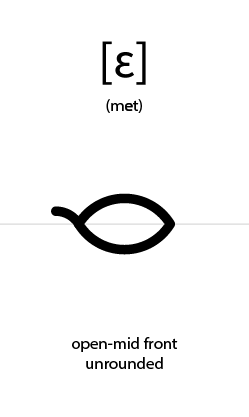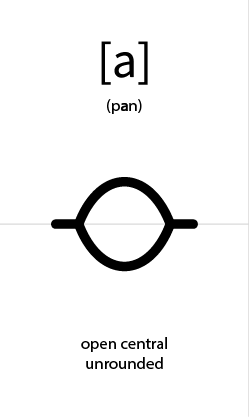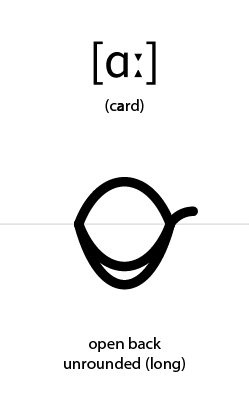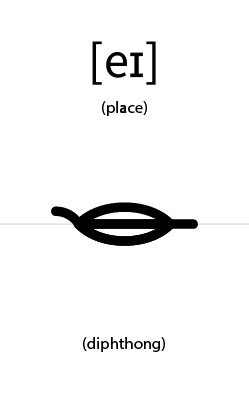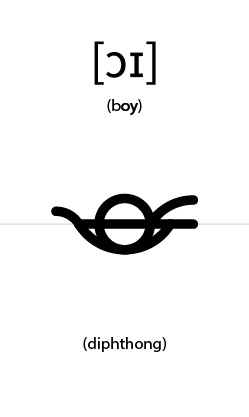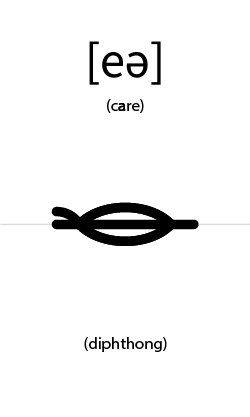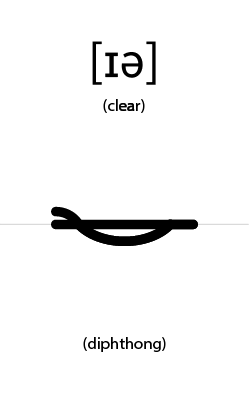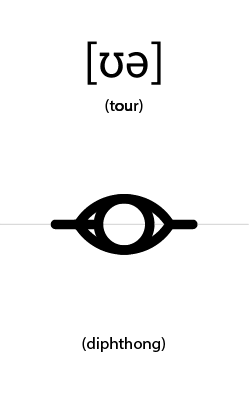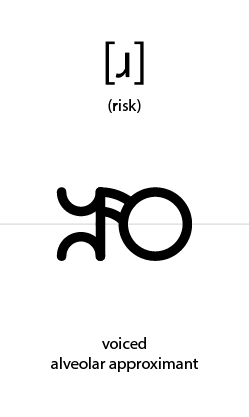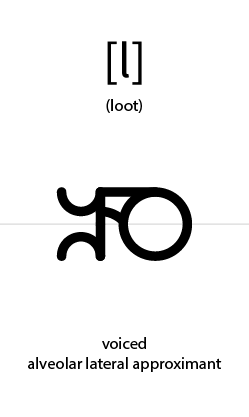Phonetic character set - ‘articulate’
I am working on a character set that visually represents the way the tongue, lips, jaw, vocal cords, and other speech organs are used to make sounds (articulatory phonetics). These 46 characters (the 46 phonemes found in British English, for now), split into vowels, diphthongs, consonants, and digraphs, can be found below, along with an IPA notation, example word, and grouping for each.
I hope to make more information available on the creation and implementation of these characters here over time as they evolve.
get in touch
Like what you see or want to know more? I have published a blog post that allows comments, so if you’d like to discuss this further, head over there using this link.
vowels
The 13 vowels and 8 diphthongs were created by referencing mouth position (close, near-close, close-mid, mid, open-mid, open), tongue position (front, near-front, central, near-back, back), and the rounded or unrounded nature of the lips when vocalising each sound.
The central shape—either leaf, circle, or ellipse—represents the mouth. Leaves represent unrounded lips. Circles and ellipses, as with [uː], [ʊ], [ɔː], and [ɒ], represent rounded lips.
The curved or straight lines to the left and/or right of the central shape represent the tongue. A curved line to the left, as with [ɛ], means ‘front’ position, as in towards the teeth. A curved line to the right, as with [ʌ], means ‘back’ position. Lines on both sides represent a central, as with [ə], or near-front/back, as with [ʊ], position.
Additional arcs beneath central shapes, as with [iː], [uː], [ɜː], [ɔː], and [ɑː], represent long vowel sounds.
diphthongs
Created by combining pairs of vowel characters, as seen above.
In most cases, the two characters are overlaid with no changes.
For clarity, in [ɔɪ], [əʊ], and [aʊ], the back position tongue lines have been lengthened.
For clarity, in [ɔɪ] and [əʊ], the height of the leaf has been increased to match the overlaid circle.
consonants
The 23 consonants and 2 digraphs were created by referencing lip, teeth, and tongue position, as well as nasal and glottal use. These positions are compiled into two groups, as follows:
Group 1 - Bilabial, Labiodental, Dental, Alveolar, Postalveolar, Retroflex, Palatal, Velar, and Glottal.
Group 2 - Plosive, Nasal, Fricative, Approximant, and Lateral Approximant.
Each character is designed by merging two characteristics, one from Group 1 and one from Group 2.
GROUP 1
Bilabial
The upper and lower lips (half-circles) touch, as with [p], [b], and [m].
LABIODENTAL
The upper teeth touch the lower lip, with the lower lip set back, as with [f] and [v].
Dental
The tongue (a straight line in this case) touches the teeth, as with [θ] and [ð].
Alveolar
The tongue (a curved line in this case) is raised at the front, touching behind the upper teeth, as with [t], [d], [n], [s], [z], [ɹ̠], and [l].
Postalveolar
The tongue (a curved line in this case) is raised higher at the front, touching between the upper teeth and the palate, as with [ʃ], [ʒ], and the digraphs [tʃ] and [dʒ].
Retroflex
The tongue (a curved line in this case) is raised high at the front and the back, as with [ɭ].
Palatal
The tongue (a straight line in this case) pushes up against the palate of the mouth, as with [j].
Velar
The tongue (a curved line in this case) is raised at the back, as with [k], [g], and [ŋ].
Glottal
The vocal cords contribute to the sound, represented by a small circle below the teeth, as with [ʔ] and [h].
GROUP 2
Plosive
The vocal tract is blocked, causing a stop in sound. This is represented by a second verticle line to the right of the teeth, as in [p], [b], [t], [d], [k], [g], and [ʔ].
Nasal
Air flows through the nose, represented by a small circle above the upper teeth, as with [m], [n], and [ŋ].
Fricative
Air is forced through a narrow space to produce the sound, represented by a dot to the left of the lips, as with [f], [v], [θ], [ð], [s], [z], [ʃ], [ʒ], and [h].
Approximant
Air passes between the tongue and the back of the mouth, but they do not touch, represented by multiple ‘tongue’ lines, as with [ɹ̠] and [j].
lateral Approximant
Air passes between the tongue as it touches the palate, represented by multiple ‘tongue’ lines, as with [l] and [ɭ].
The combination of these two characteristics makes each character unique, just like the biological positions required to produce them. This can be seen below, where the two characteristics, as well as whether the sound is voiced or unvoiced, are noted below each character.
Digraphs
As with the diphthongs , the 2 digraphs were created by combining pairs of consonant characters, as seen above.
word submissions
If anyone would like me to display how a certain word looks using Articulate, please submit it via the form below, and I will (over time!) add it to the submissions gallery below. Please bear in mind that I cannot take into account your accent or pronunciation, so I will transcribe it as I would speak it myself!
As mentioned, I have also published a blog post, so if you’d like to discuss it further, head over there using this link.







